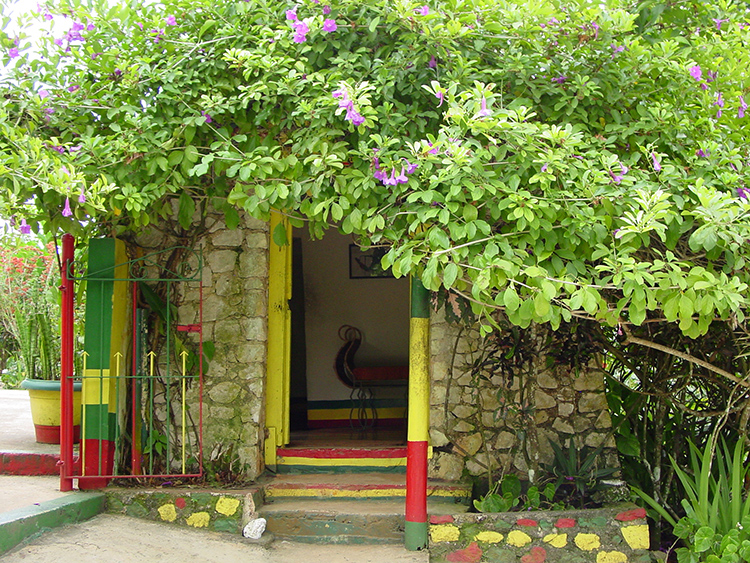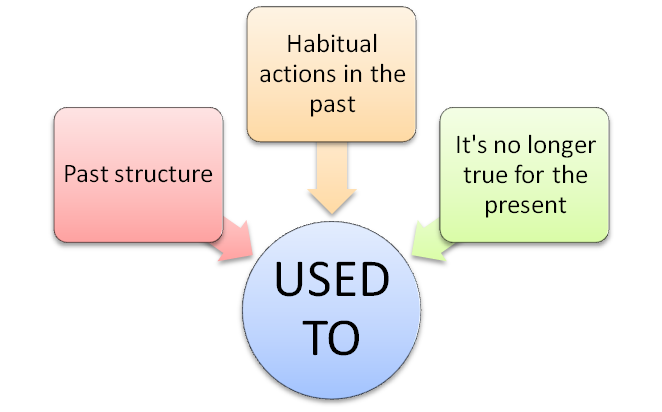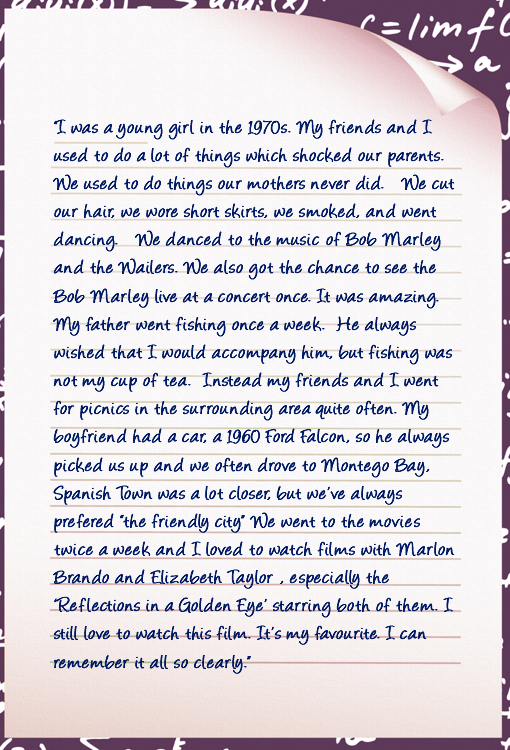My Life Back in the Day: a Story of a Jamaican boy
What’s up!
It’s good to have you here to practice a little more English. My name is Jayden, but everybody calls me Jay Jay, I was born, and have lived in Kingston, a city in the south of the island. There are a lot of exciting places in Kingston and in other parts of the island. Besides, music and food are lovely here! You must definitely come to visit Kingston. However, it has changed a lot. People used to feel safer in the streets. Children used to play football on the beach, even at night. Now it’s different, it’s a little dangerous out there. But hey! Not everything is terrible, tourists used to throw lots of garbage on the streets, but not anymore. People didn’t apply to sing so much reggae, but now it has become globalised!
On this module, you will learn a lot about how the Jamaican life and culture used to be and how it is now.
By the end of this topic you will:
• Revise and practice the structure “used to” to refer to habits in the past. Within the context of life in Jamaica- an English Caribean country.
The official name of the country is Jamaica. The formal government is Parliamentary democracy, and our capital city is Kingston. The official language is English. But, we also have other languages such as Patois that is widely spoken on the island.
Jamaica is a mountainous island in the Caribean Sea. Jamaica is part of the Caribean Islands known as the Greater Antilles with Cuba, and Puerto Rico.
Jamaica is definitely a multicultural country. More than 90 per cent of the population is of African descent. But many other people have come from China, India, Germany, and Syria to find work on the island. Jamaica's motto is "Out of Many, One People."
Listen and read the following conversation between two tourists in Jamaica. They are discussing their trip about a previous time they visited Jamaica.
Patrick: Mmmhhh! I’m not sure we’re in the right direction, maybe we should ask someone for directions.
Carmen: But last year we came to Bob’s Museum! I don’t think it moved from Hope road! Relax Pat! We will find it where it used to be.
Patrick: But you can see that Kingston has changed from the time we came here five years ago, can’t you? Kingston did n’t use to have so much traffic. But the amount of new hotels and fancy restaurants is overwhelming. Remember the time we walked all the way to Carlos Café on Belmont road? Now there are tons of new cool places to have a snack before Carlos’ place. I used to be a lot younger now. I don’t think I could walk that much.
Carmen: Oh yes! Carlos café! I remember I used to ask for those delicious crab dishes they made. The music was so good that I used to dance to all the songs the DJ played. Well, don’t worry I don’t think we have to walk that much longer anymore. We didn’t use to have that new seafood restaurant. The place is perfect, don’t you think?
Patrick: You mean So so bar? Well yeah, it’s pretty good. The curried chicken they offer is good, but a bit spicy. The only thing I’m afraid we lost the beautiful forest landscape we used to have. Carmen: Ok…we’re almost arriving at Marley’s home... here it is. Hope road and Sandhurst Avenue, this is where we used to pick up our bus back to the hotel. So the museum must be 2 minutes away.
Patrick: Well after all this time you’re still very good at driving Carmen, we didn’t get lost like we used to! Especially when I drive! I’m glad you decided to take the car!
Carmen: Thanks Pat, I am a great driver!
Kingston sounds like a cool place to visit, isn’t it? The place has changed a lot according to the speakers, what did we learn from the previous conversation between Patrick and Carmen?

Waldor, D. (2005) Bob Marley Birthplace [photo] Retrieved on 2017, June 27 from https://www.flickr.com/photos/dwaldron/450610377/in/photolist-FPuLr-FPuL2
In the past conversation, we have learned a little about Kingston, Jamaica. We know there is a museum in Bob Marley’s home. That should be interesting!
We also noted from the conversation that Patrick and Carmen have been there at least on two occasions. Their expressions about Kingston tell us that they see a specific difference right? Let’s have a look at some of their sentences:
I used to ask for those delicious crab dishes
Kingston didn’t use to have so much traffic
These two sentences come from the conversation. In the first example, you can see the used to structure. Used to is a unique expression of English, its use is similar to that of a modal verb because it gives extra information to the main verb. Used to shows that an action in the past was done repeatedly, but it is not performed anymore.
Used to follows the same rules as any other action verb which is why we use did in questions and in negatives like in the second example.
Example 1
I used to ask for those delicious crab dishes
(Used to expression + infinitive of the verb)
Example 2
Kingston didn’t use to have so much traffic
(aux did neg+use to expression + infinitive of the verb)
It is not that difficult, right?
The following chart will help you understand better how to structure used to.
As we previously observed, we are reviewing a past structure:

In the previous chart, we learned that used to is a structure that shows an action that was performed repeatedly in the past:
Kingston used to be a peaceful city (now there is a lot of traffic).
Carmen used to dance to the music (now she does not dance too often).
The negative form of used to shows how an action was not performed repeatedly in the past, but now it has become more frequent:
We didn’t use to have a seafood restaurant.
Since we are using the auxiliary did in the negative form then the verb remains in the base form.
Take a look at the following chart:

Let’s learn a little more about the life in Kingston, and of course about the use of used to.
As mentioned before, used to shows a repeated action in the past. The following sentences are in the past, but we need to show the repeated action.
The following pictures represent activities I used to do when I was a young man in Kingston.
Used to is one of those grammar structures that show the importance of past repeated events, in other words, not only we did those past events, but we did those activities time and time again. On a different side, you’ve also learned a little bit about Jamaica’s culture -a Caribbean Island where English is spoken.
Let’s continue working on practising about used to, by taking a look at the following activities.
Activity 1
Let’s find out a little bit more about Jay’s family, You will read an excerpt from Danielle’s diary. She’s Jayden’s grandmother.
Before reading the text, can you guess what she will talk about?
Activity 2
So, what do you think about Danielle’s life? She used to do a lot of different things, don’t you think? Going to concerts, listening to music, and long etcetera! Well, at least that’s what we guessed from the pictures we saw in the previous activity. But let’s find out for once! Read the following paragraph taken from Jay’s mom personal diary -Danielle. Then answer the questions below.

Activity 3
As life goes by, we have all changed, don’t you think? You will listen to two friends talking about changes in their lifestyles. Listen to the recording and then answer the questions below.
Activity 4
In our life there are things we used to do quite often in the past, think about it! Play with our toys, going to the movies, going out with someone. Also think about those bad habits that you stopped doing for example smoking, sleeping late etc.
Download the following word document, Things I used to do and things I didn’t use to do. Fill in the chart with the information. In the table, you will write 10 activities you used to do that you don’t do now. Then write 10 activities you didn’t use to do, but you do now.
This is a previous exercise to the next activity, so you don’t have to upload your document.
Activity 5
Imagine you are writing a short letter to your grandchildren.
In a word document write a text between 130 and 140 words where you talk about the activities you used to and didn’t use to do in your childhood and adolescence.
Have a look at the writing rubrics so have an idea on what aspects you should take into account. Then use them to evaluate yourself.
Activity 6
So far, we have learned quite a bit about what life used to be in Jamaica from Jay and his Mother Danielle, remember? Now it is your turn to talk about what life used to be in your city 10 years ago!!
You will record short audio where you talk about different aspects, activities and situations. Mention the way they used to be or didn’t use to be in the past. Then, how they have changed over time.
For your recording choose three situations from the following list:
In your recording you must consider the following elements:
Organise your speech considering the following questions:
For this activity, you will be evaluated according to the rubrics.
Click to listen to the example.
The following exercises will help you to assess your knowledge of the used to structure.
Read the sentences and drag the different forms of used to to the appropriate sentences.
British Council (2017) Used to. Retrieved on 2017, July 24 from: http://learnenglishteens.britishcouncil.org/grammar-vocabulary/grammar-videos/used
British Council (2017) Used to: lower intermediate. Retrieved on 2017, July 24 from: http://www.bbc.co.uk/learningenglish/english/course/lower-intermediate/unit-17
British Council (2017) Used to: lower intermediate. Retrieved on 2017, July 24 from: http://www.bbc.co.uk/learningenglish/english/course/lower-intermediate/unit-17
English exercises. Used to exercise. Retrieved on 2017, July 24 from: http://www.englishexercises.org/makeagame/viewgame.asp?id=1230
English exercises. Used to exercise. Retrieved on 2017, July 24 from: https://www.englishgrammar.org/exercise-8/